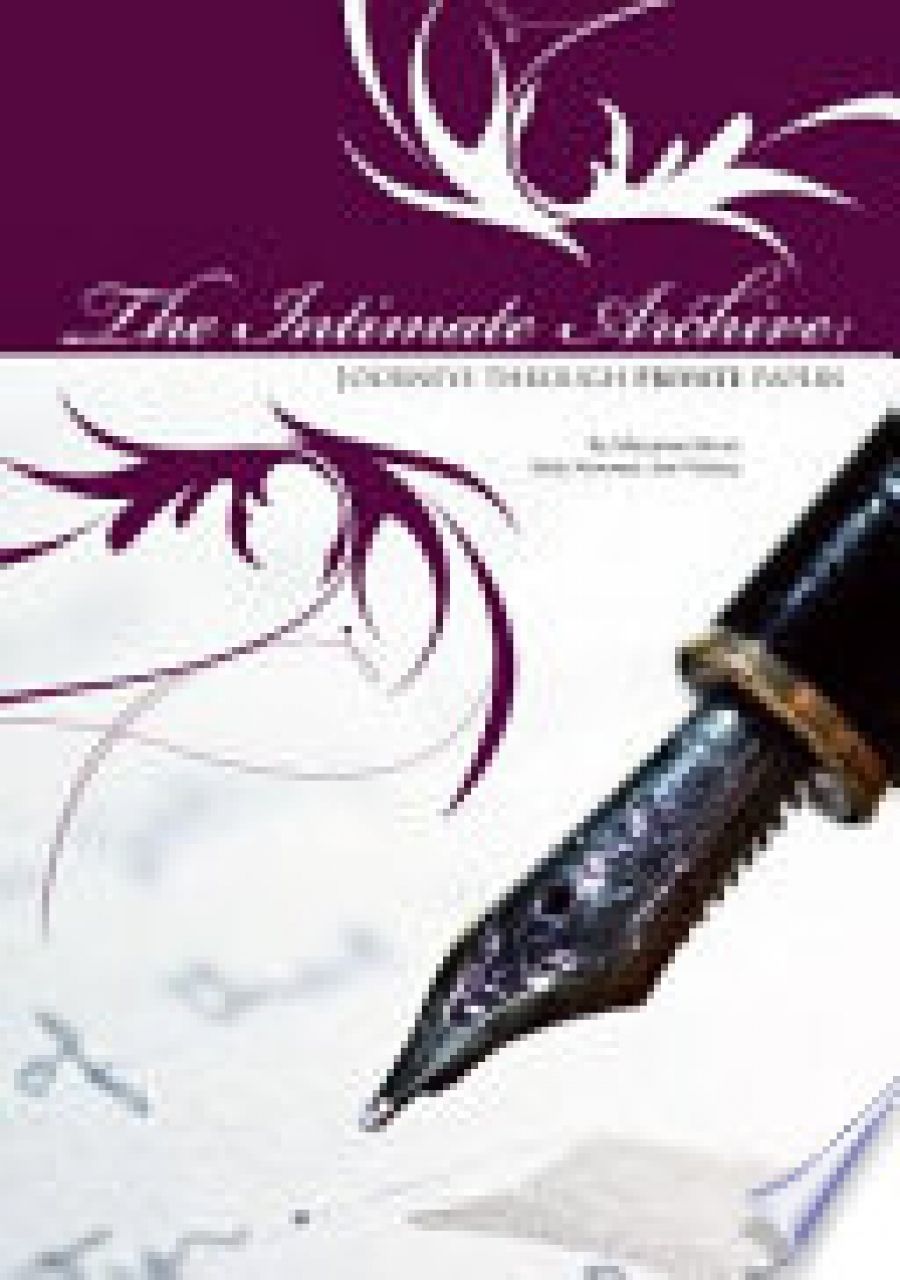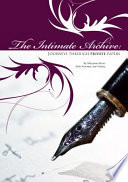
- Free Article: No
- Contents Category: Literary Studies
- Review Article: Yes
- Article Title: Fishing nets
- Online Only: No
- Custom Highlight Text:
‘What is it that distinguishes “the experience of being in the archives” from other types of research?’ The introduction to The Intimate Archive indicates that this is a crucial question underpinning the book. Neither dry repositories of records nor merely the random detritus of lives, archives are understood as constructed artefacts, shaped by cultural and political practices as well as by chance. Their meaning also depends on the historical moment: what is overlooked by one generation of researchers may be important to another. What is regarded as evidence by a researcher trained in literature may be questioned by an historian. Particular interests, as well as factors like gender, may also influence the materials researchers select from papers and how they interpret them.
- Book 1 Title: The Intimate Archive
- Book 1 Subtitle: Journeys through private papers
- Book 1 Biblio: National Library of Australia, $34.95 pb, 198 pp
- Book 1 Cover Small (400 x 600):

- Book 1 Cover (800 x 1200):

Three feminist scholars, working from an interdisciplinary perspective on Australian women writers of the modernist period, explore the specific challenges of interpreting personal papers such as letters and diaries: ‘the intimate archive’ of the title. How do we make sense of surviving traces of private lives that end up in public archives? With changing understandings of the public–private divide, how do we read papers from another era, and what are the ethics involved? The subjects are Marjorie Barnard, Lesbia Harford and Aileen Palmer, while the key literary critic of the period, ‘auto-archivist’ Nettie Palmer, forms a thread between them, as colleague, friend or parent.
The introduction promises personal reflections by the three scholars on their journeys ‘into the archive’. This they do with varying degrees of success.
Of the three chapters, the outstanding one is Maryanne Dever’s ‘Marjorie Barnard Falls in Love’. Barnard (1897–1987) was half of ‘M. Barnard Eldershaw’ (a literary collaboration with Flora Eldershaw); she also wrote short stories under her own name. Dever’s essay builds on years of research into archives that relate to her subject, made more difficult by the fact that there is no extensive Barnard archive per se. Here, Dever concentrates on the long-standing liaison between the unmarried Barnard and the much-married writer, Frank Dalby Davison. Extramarital affairs are traditionally glossed over by scholars, but Dever’s sensitive exploration of the relationship adds a new dimension to Barnard’s life and shows how her writing was affected. In fact, her most anthologised story ‘The Persimmon Tree’ grew out of the affair’s painful demise.
Dever reflects throughout on her own practice, particularly on the pressure felt by scholars and biographers to create a seamless account of their subjects from ‘an archive that resembles a fishing net, with the few threads held taut over pockets of nothingness’. She sets out to ‘read fragmentarily’, exploring gaps and absences rather than stitching over them. In the end, as she admits, she cannot resist the temptation to ‘story’ the events, but she does not smooth over the traces of her struggle. This different kind of writing, in which narrative and process are intertwined, is being explored by biographers, memoirists and even novelists who use archives.
Ann Vickery’s essay on the ‘idealised legacy’ of poet and political activist Lesbia Harford (1891–1927) examines the different ways Harford’s life has been constructed by scholars such as Nettie Palmer, Drusilla Modjeska and Jeff Sparrow. Highlighting the ways changing cultural attitudes and personal interests can affect how a life is interpreted, Vickery’s essay is less a reflection on her own experience of ‘being in the archive’ than a sustained argument about how to read Harford’s poetry as performative rather than indicative of her interior life. Though persuasive, Vickery at times strains for effect, casting (with qualifications) Modjeska’s elegant pioneering essay on Harford’s life and poetry as a 1980s feminist ‘rescue’ operation. Modjeska’s observation that ‘most of Lesbia’s papers had vanished’ is interpreted condescendingly as suggesting ‘that there are papers out there that “can tell all” if one but knew how and where to find them’.
Sally Newman has undertaken ground-breaking research on lesbian historiography, articulating the complex issues involved in reading archives for ‘evidence’ of unsanctioned sexuality. The final essay in this collection concentrates on the complexities of the archive left by poet Aileen Palmer (1915–88), daughter of Nettie and Vance. Although she had no known significant sexual relationships during a life fractured by mental illness, Aileen’s unpublished autobiographical writings contain traces of lesbian desire. Newman reflects on her own personal investment in her subject as she examines, through the lens of trauma theory, significant manuscripts in an archive that contains fragmented writing as well as typically fragmented archive content. She also reflects on the powerful influence of another type of archival material – the photograph. The formal ‘one’ often sits in uneasy tension with the first-person ‘I’ in this intriguing but not entirely successful transformation from thesis to book chapter.
Archival photographs embellish this slim book, from which some of the thirty pages of endnotes could have been omitted.


Comments powered by CComment